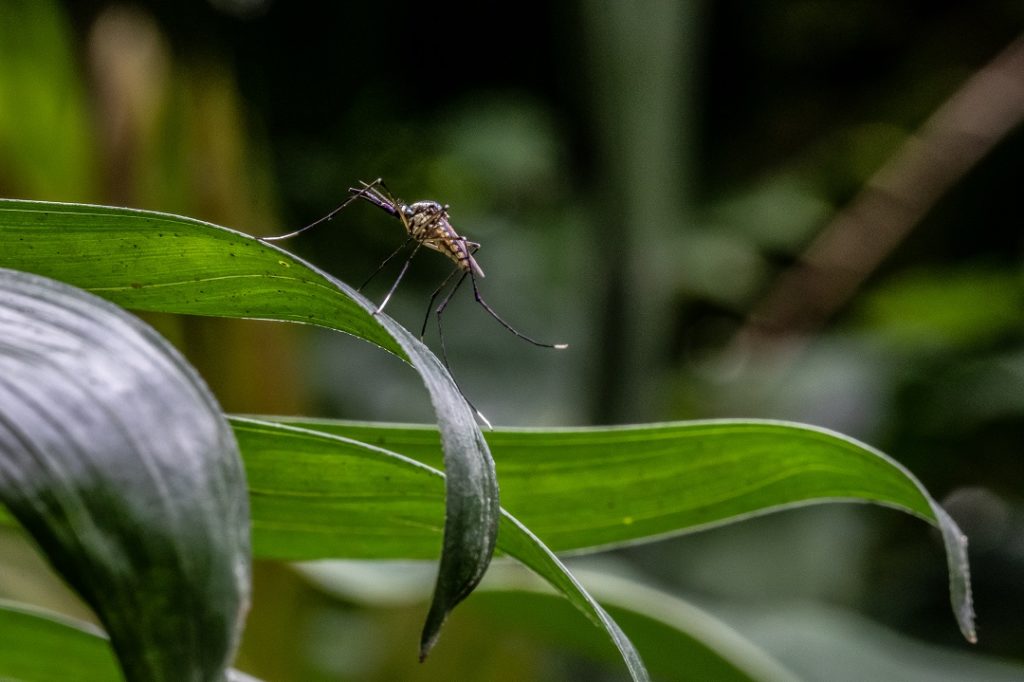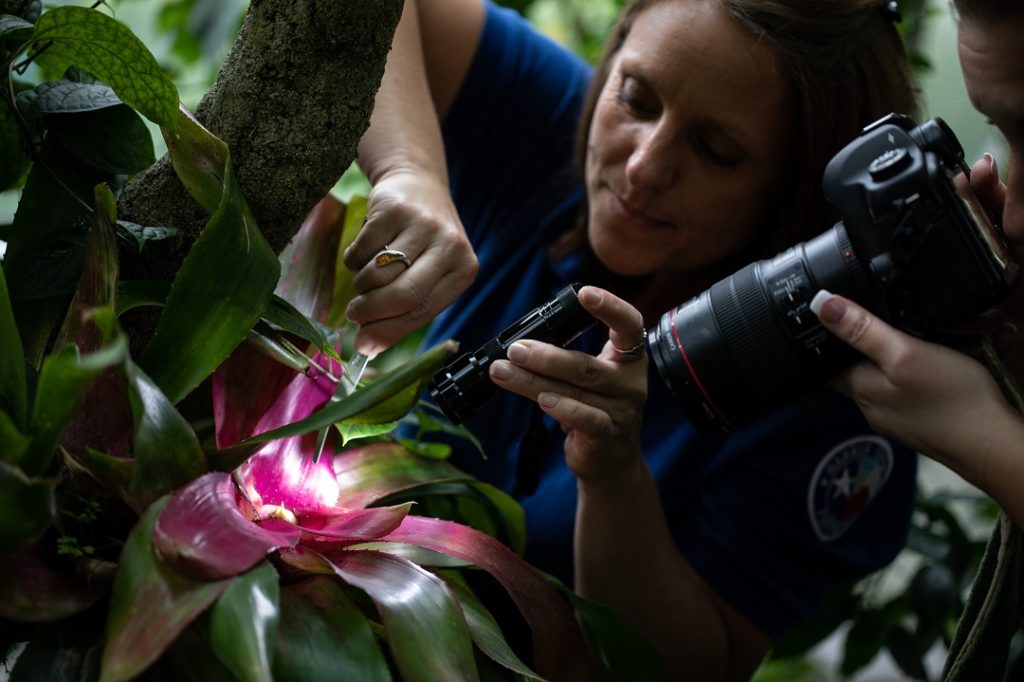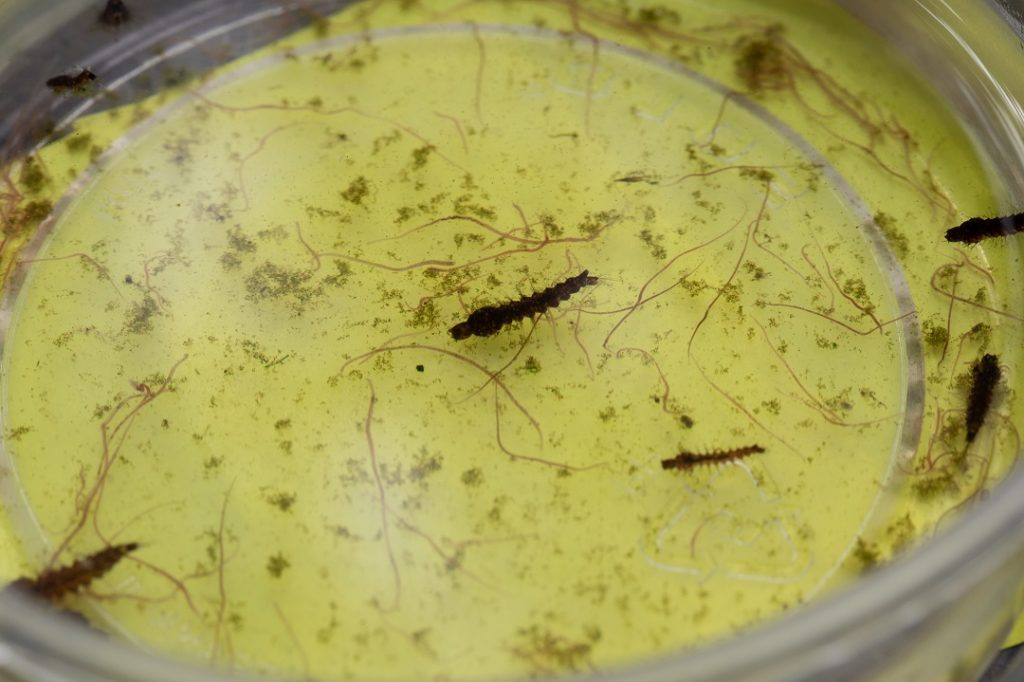Exciting things are happening in the Cockrell Butterfly Center! Anita Schiller, Director of the Biocontrol Mosquito Initiative in Harris County Precinct 4 is working with our staff to test an innovative, eco-friendly way to control the population of mosquitoes in Harris Country using a natural predator of everybody’s least favorite insect called the mosquito assassin (Toxorhyncites rutilus). If the experiment proves successful, this may lead to a significant reduction in the amount of pesticides pumped into the air around Houston each summer.

I know this may seem too good to be true; I thought the same thing when I first heard about the project. Let’s not forget that past attempts to regulate pests by introducing predators into an environment have had not-so-favorable outcomes. Take cane toads, for example. They were introduced to Australia in an effort to control cane beetle populations. After being released, however, the toads not only did absolutely nothing to control beetle populations, they actually became major pests themselves. The venomous toads are responsible for declining numbers of several native Australian predators who die after eating them.
But mosquito assassins aren’t an exotic species to Harris County like cane toads were to Australia, they’re actually native Texans. In fact, they already populate wooded areas around Houston! Many locals call them elephant mosquitoes, you may have heard of them by that name.
Mosquito assassins feed on mosquitoes in their larval stage, then in their adult stage they become nectar feeders, so in addition to killing mosquitoes, they pollinate flowers, which actually helps the local ecosystem. Using mosquito assassins to fight mosquitoes isn’t about messing with the natural order of things, it’s about harnessing a completely natural process for our benefit.

Right now this innovative method for reducing mosquito populations is still in its experimental phase, and the Cockrell Butterfly center is the lab in which Anita’s team has chosen to test it. Since the Butterfly Center is an enclosed environment, neither the mosquitoes (yes, mosquitoes have made their way inside the Center) nor the mosquito assassins can escape, making it much easier to monitor their populations.
The plan is to release a batch of assassins each week for a period of about a month. These assassins will hopefully establish themselves in the Butterfly Center and breed to create a stable population. The team will be monitoring mosquito populations throughout the process to see what the effect is. Hopefully the mosquitoes will gradually disappear. At that point, the team will see if it is possible to maintain the mosquito assassin population to prevent any future mosquito incursions. The great challenge so far has been keeping the assassin population stable without a population of mosquitoes for their larvae to eat.

Field studies are already being carried out in Harris County and also in other states. Previous field studies in Louisiana revealed that the release of mosquito assassins followed by ultra-low volume insecticide application reduced the target population by 98 percent, whereas the insecticide application by itself provided only a 29 percent reduction. The advantage of the current experiment in the Butterfly Center is being able to test the process in an enclosed, controlled environment.
Time will tell if this all-natural method for making summer safer by reducing mosquito populations and the diseases they spread will work out. In the meantime, Anita’s team is working on other exciting natural mosquito-killers in other locations, including aquatic plants that “eat” mosquito eggs and nematodes that kill mosquito larvae. If anything’s for sure, it’s that we will be relying less on pesticides to control pest population in the near future.

If you want to see this research project in action, come to the Cockrell Butterfly Center! Anita’s team releases mosquito assassins (which are completely harmless to humans) each Tuesday this month. It’s a sight to behold. If you can’t make it on Tuesday, we have a small exhibit in the Center with text panels that teach you more about the project. Eagle-eyed visitors may even be able to see the mosquito assassins in action.






